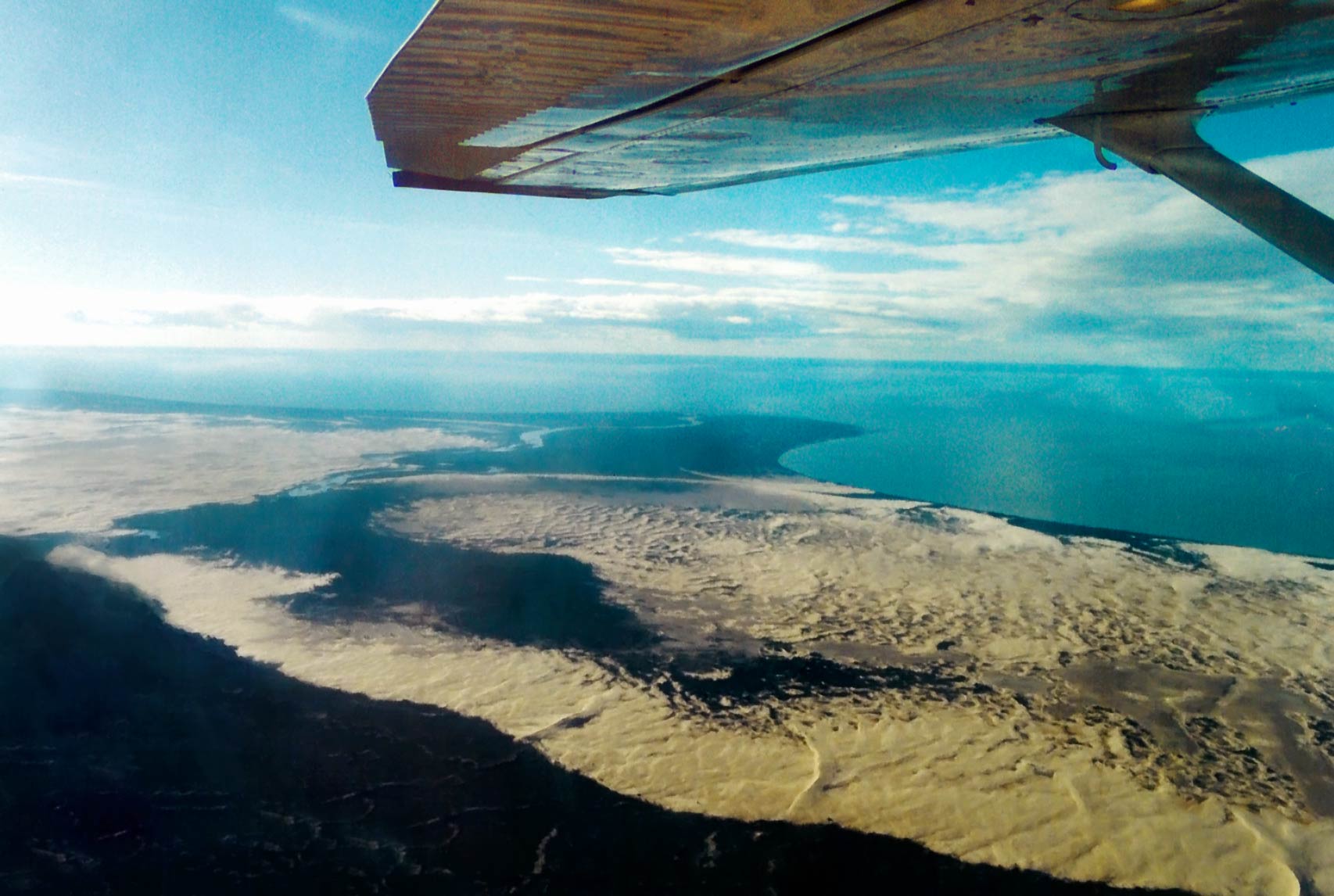|
Shell Lake, Saskatchewan
Shell Lake ( 2016 population: ) is a village in the Canadian province of Saskatchewan within the Rural Municipality of Spiritwood No. 496 and Census Division No. 16. This village is 90 kilometres west of the City of Prince Albert. It was formerly part of the Rural Municipality (RM) of Shell Lake No. 495 before it was absorbed by the RM of Spiritwood No. 496. It is the administrative centre of the Ahtahkakoop Cree First Nation band government. History Shell Lake incorporated as a village on October 18, 1940. The Shell Lake murders took place on a nearby farm in 1967. Demographics In the 2021 Census of Population conducted by Statistics Canada, Shell Lake had a population of living in of its total private dwellings, a change of from its 2016 population of . With a land area of , it had a population density of in 2021. In the 2016 Census of Population, the village of Shell Lake recorded a population of living in of its total private dwellings, a change f ... [...More Info...] [...Related Items...] OR: [Wikipedia] [Google] [Baidu] |
Canada 2016 Census
The 2016 Canadian census was an enumeration of Canadian residents, which counted a population of 35,151,728, a change from its 2011 population of 33,476,688. The census, conducted by Statistics Canada, was Canada's seventh quinquennial census. The official census day was May 10, 2016. Census web access codes began arriving in the mail on May 2, 2016. The 2016 census marked the reinstatement of the mandatory long-form census, which had been dropped in favour of the voluntary National Household Survey for the 2011 census. With a response rate of 98.4%, this census is said to be the best one ever recorded since the 1666 census of New France. This census was succeeded by Canada's 2021 census. Planning Consultation with census data users, clients, stakeholders and other interested parties closed in November 2012. Qualitative content testing, which involved soliciting feedback regarding the questionnaire and tests responses to its questions, was scheduled for the fall of 2013, w ... [...More Info...] [...Related Items...] OR: [Wikipedia] [Google] [Baidu] |
World War I
World War I (28 July 1914 11 November 1918), often abbreviated as WWI, was List of wars and anthropogenic disasters by death toll, one of the deadliest global conflicts in history. Belligerents included much of Europe, the Russian Empire, the United States, and the Ottoman Empire, with fighting occurring throughout Europe, the Middle East, Africa, the Pacific Ocean, Pacific, and parts of Asia. An estimated 9 million soldiers were killed in combat, plus another 23 million wounded, while 5 million civilians died as a result of military action, hunger, and disease. Millions more died in Genocides in history (World War I through World War II), genocides within the Ottoman Empire and in the Spanish flu, 1918 influenza pandemic, which was exacerbated by the movement of combatants during the war. Prior to 1914, the European great powers were divided between the Triple Entente (comprising French Third Republic, France, Russia, and British Empire, Britain) and the Triple A ... [...More Info...] [...Related Items...] OR: [Wikipedia] [Google] [Baidu] |
Scouts Canada
Scouts Canada is a Canadian Scouting association providing programs for young people, aged 5 to 26, with the stated aim "to help develop well rounded youth, better prepared for success in the world". Scouts Canada, in affiliation with the French-language Association des Scouts du Canada, is a member of the World Organization of the Scout Movement (WOSM). In 2019-20 youth membership stood at 53,259, an 18% decline from 64,693 in 2014-15. Over the same period, volunteer numbers also declined 18%, from 20,717 in 2015 to 16,885 in 2020. Scouts Canada has declined significantly in size since its peak: youth membership is down 82% from 288,084 in 1965 and volunteer numbers are down 50% from 33,524 in 1965. Values Scouts Canada states a commitment to the Scouting Method approach, which emphasizes the following elements: * Scout Law and Promise * Learning by Doing * The Team System * A Symbolic Framework * Nature * Personal Progression * Adult Support * Community Involvement As part o ... [...More Info...] [...Related Items...] OR: [Wikipedia] [Google] [Baidu] |
Miniature Golf
Miniature golf, also known as minigolf, mini-putt, crazy golf, or putt-putt, is an offshoot of the sport of golf focusing solely on the putting aspect of its parent game. The aim of the game is to score the lowest number of points. It is played on courses consisting of a series of holes (usually a multiple of 9) similar to its parent, but characterized by their short length (usually within 10 yards from tee to cup). The game uses artificial putting surfaces (such as carpet, artificial turf, or concrete), a geometric layout often requiring non-traditional putting lines such as bank shots, and artificial obstacles such as tunnels, tubes, ramps, moving obstacles such as windmills, and walls of concrete, metal, or fiberglass. When miniature golf retains many of these characteristics but without the use of any props or obstacles, it is purely a mini version of its parent game. Nomenclature While the international sports organization World Minigolf Sport Federation (WMF) prefers ... [...More Info...] [...Related Items...] OR: [Wikipedia] [Google] [Baidu] |
Northern Pike
The northern pike (''Esox lucius'') is a species of carnivorous fish of the genus ''Esox'' (the pikes). They are typical of brackish water, brackish and fresh waters of the Northern Hemisphere (''i.e.'' holarctic in distribution). They are known simply as a pike in Great Britain, Britain, Ireland, and most of Eastern Europe, Canada and the United States. Pike can grow to a relatively large size: the average length is about , with maximum recorded lengths of up to and published weights of . The International Game Fish Association, IGFA currently recognizes a pike caught by Lothar Louis on Greffern Lake, Germany, on 16 October 1986, as the all-tackle world-record northern pike. Northern pike grow to larger sizes in Eurasia than in North America, and typically grow to larger sizes in coastal than inland regions of Eurasia. Etymology The northern pike gets its common name from its resemblance to the pole-weapon known as the Pike (weapon), pike (from the Middle English for 'point ... [...More Info...] [...Related Items...] OR: [Wikipedia] [Google] [Baidu] |
Marina
A marina (from Spanish language, Spanish , Portuguese language, Portuguese and Italian language, Italian : ''marina'', "coast" or "shore") is a Dock (maritime), dock or basin with moorings and supplies for yachts and small boats. A marina differs from a port in that a marina does not handle large passenger ships or cargo from freighters. The word ''marina'' may also refer to an inland wharf on a river or canal that is used exclusively by non-industrial pleasure craft such as canal narrowboats. Emplacement Marinas may be located along the banks of rivers connecting to lakes or seas and may be inland. They are also located on coastal harbors (natural or man made) or coastal lagoons, either as stand alone facilities or within a port complex. History In the 19th century, the few existing pleasure craft shared the same facilities as merchant ship, trading and fishing vessels. The marina appeared in the 20th century with the popularization of yachting. Facilities and services A ... [...More Info...] [...Related Items...] OR: [Wikipedia] [Google] [Baidu] |
Baseball Field
A baseball field, also called a ball field or baseball diamond, is the field upon which the game of baseball is played. The term can also be used as a metonym for a baseball park. The term sandlot is sometimes used, although this usually refers to less organized venues for activities like sandlot ball. Specifications :''Unless otherwise noted, the specifications discussed in this section refer to those described within the Official Baseball Rules, under which Major League Baseball is played.'' The starting point for much of the action on the field is home plate (officially "home base"), a five-sided slab of white rubber. One side is long, the two adjacent sides are . The remaining two sides are approximately and set at a right angle. The plate is set into the ground so that its surface is level with the field. The corner of home plate where the two 11-inch sides meet at a right angle is at one corner of a square. The other three corners of the square, in counterclockwise ... [...More Info...] [...Related Items...] OR: [Wikipedia] [Google] [Baidu] |
Saskatchewan Highway 12
Highway 12 is a major highway in the Canadian province of Saskatchewan. It begins in Saskatoon at the intersection of Idylwyld Drive and Highway 11 north (formerly beginning further south at the intersection with 22nd Street), initially running north on Idylwyld Drive concurrently with Highway 11 and Highway 16. Just outside Saskatoon's northern city limits, Highway 11 exits northeast from Idylwyld Drive and Highway 12 begins and travels north, passing through the city of Martensville. Highway 12 cross the North Saskatchewan River over Petrofka Bridge and passes through the town of Blaine Lake and intersects highway Highway 40, finally terminating at Highway 3 near Shell Lake. Highway 12 is about long. History ''Provincial Highway 12'' was originally the designated route which connected Saskatoon and Prince Albert, following present-day Highway 12 to the Hepburn area, then following present-day Highway 312 to Rosthern, before continuing northwest to Prince Albert. In the ... [...More Info...] [...Related Items...] OR: [Wikipedia] [Google] [Baidu] |
Saskatchewan Highway 3
Highway 3 is a major provincial paved undivided highway in the Canadian province of Saskatchewan. It runs from the Alberta border, where it continues west as Alberta Highway 45, to the Manitoba border, and then continues east as Highway 77. Highway 3 is about 615 km (382 mi.) long. The CanAm Highway comprises Saskatchewan Highways 35, 39, 6, 3, as well as 2. of Saskatchewan Highway 3 contribute to the CanAm Highway between Melfort and Prince Albert. Major communities that Highway 3 passes through are Prince Albert, Melfort, and Tisdale. Travel route Travel continues west as Alberta Highway 45 at the Alberta – Saskatchewan border. The Saskatchewan portion of the route begins in the northwestern area of the aspen parkland ecoregion, north of Lloydminster the border city. Ttrembling aspen ''(Populus tremuloides)'' form bluffs (''small islands or shelter belts'') which are typical in this area. This area also marks the northernmost area of the Mi ... [...More Info...] [...Related Items...] OR: [Wikipedia] [Google] [Baidu] |
List Of Protected Areas Of Saskatchewan
This is a list of protected areas of Saskatchewan. National parks Provincial parks The federal government transferred control of natural resources to the western provinces in 1930 with the Natural Resources Acts. At that time, the Saskatchewan government set up its own Department of Natural Resources. In an attempt to get people working and to encourage tourism during the Great Depression, several projects were set up by the government, including setting up a provincial park system in 1931. The founding parks include Cypress Hills, Duck Mountain, Good Spirit Lake, Moose Mountain, Katepwa Point, and Little Manitou. Greenwater Lake was added in 1932. Two more parks were added by the end of the 1930s and Little Manitou ceased to be a provincial park in 1956 and in 1962, it became a regional park. The list of parks, and their types, come from The Parks Act. Regional parks Most Regional Parks are established as per the Regional Parks Act. Virtually all of the ... [...More Info...] [...Related Items...] OR: [Wikipedia] [Google] [Baidu] |




